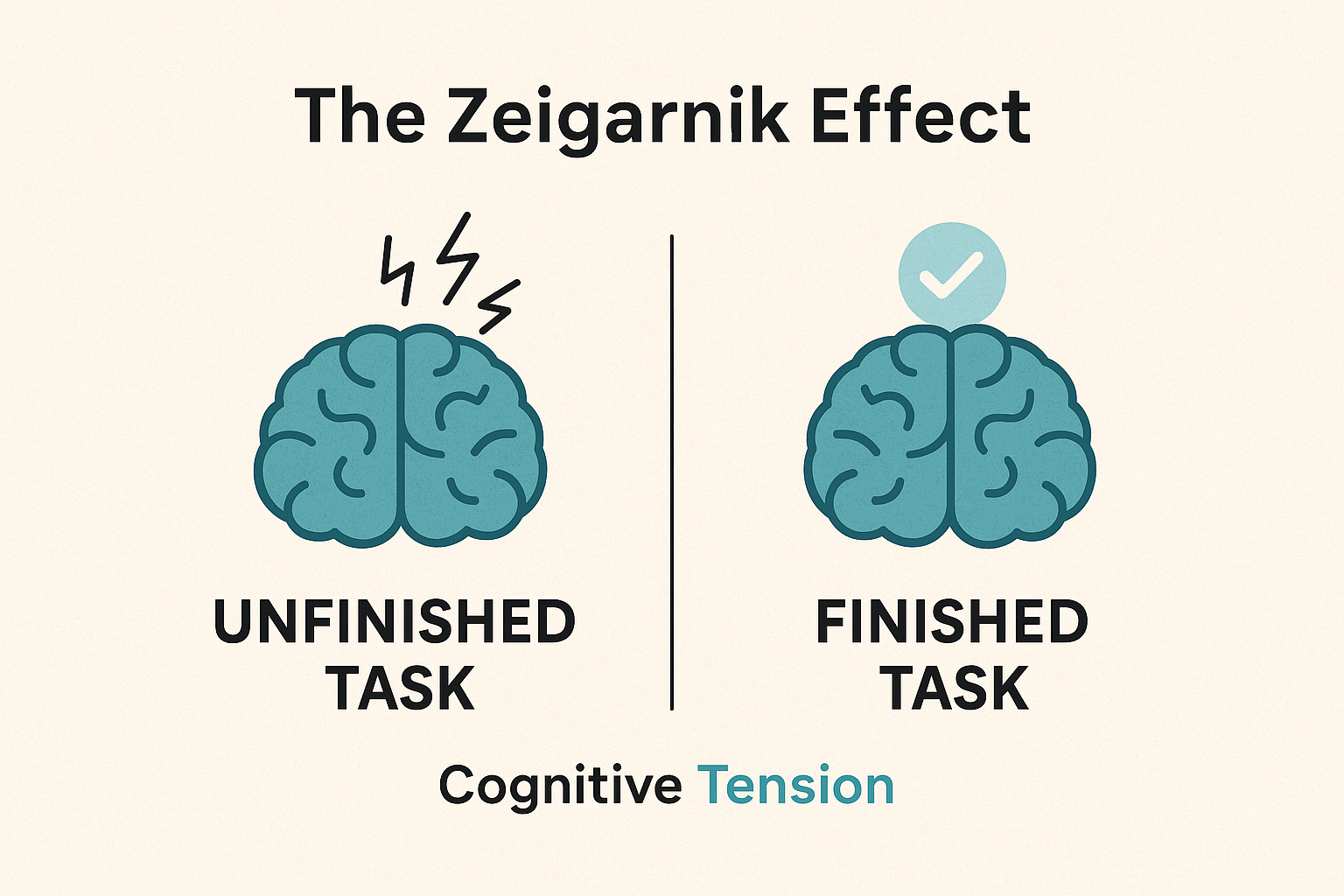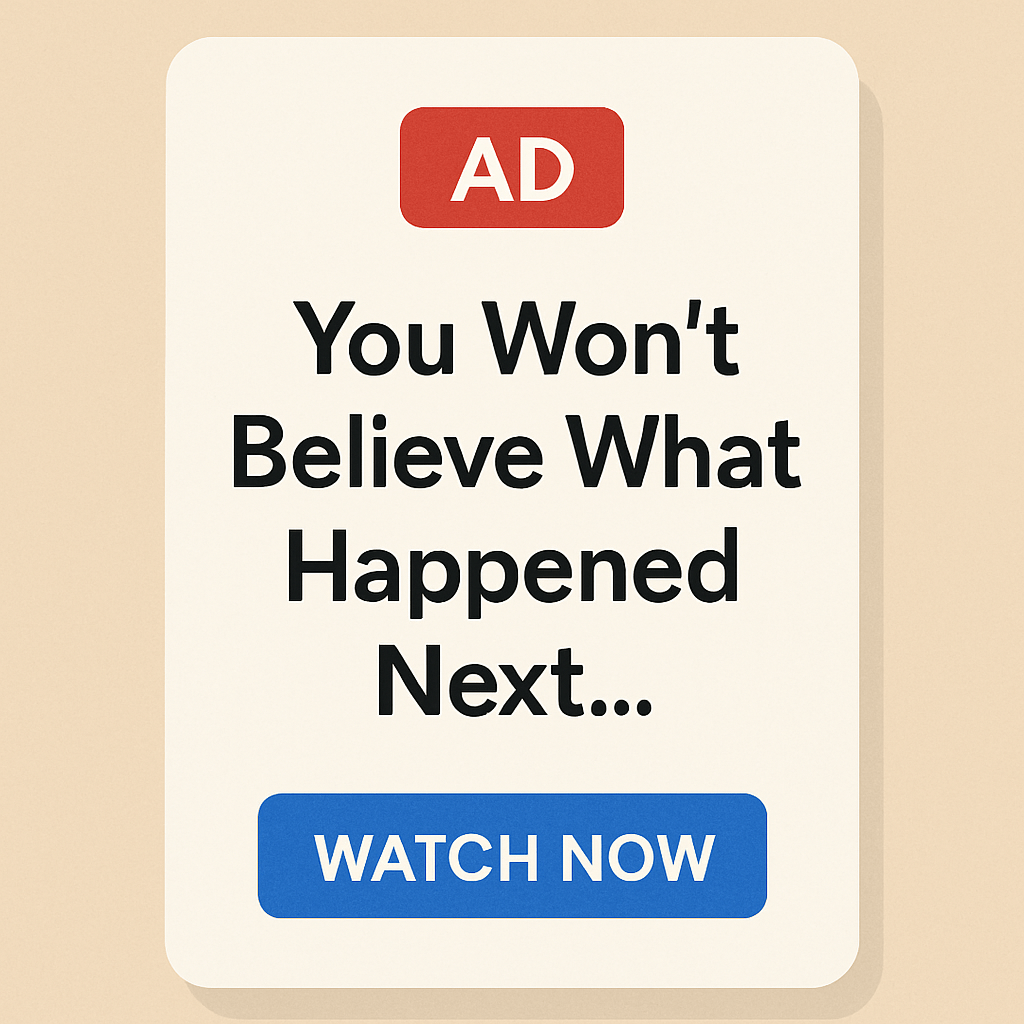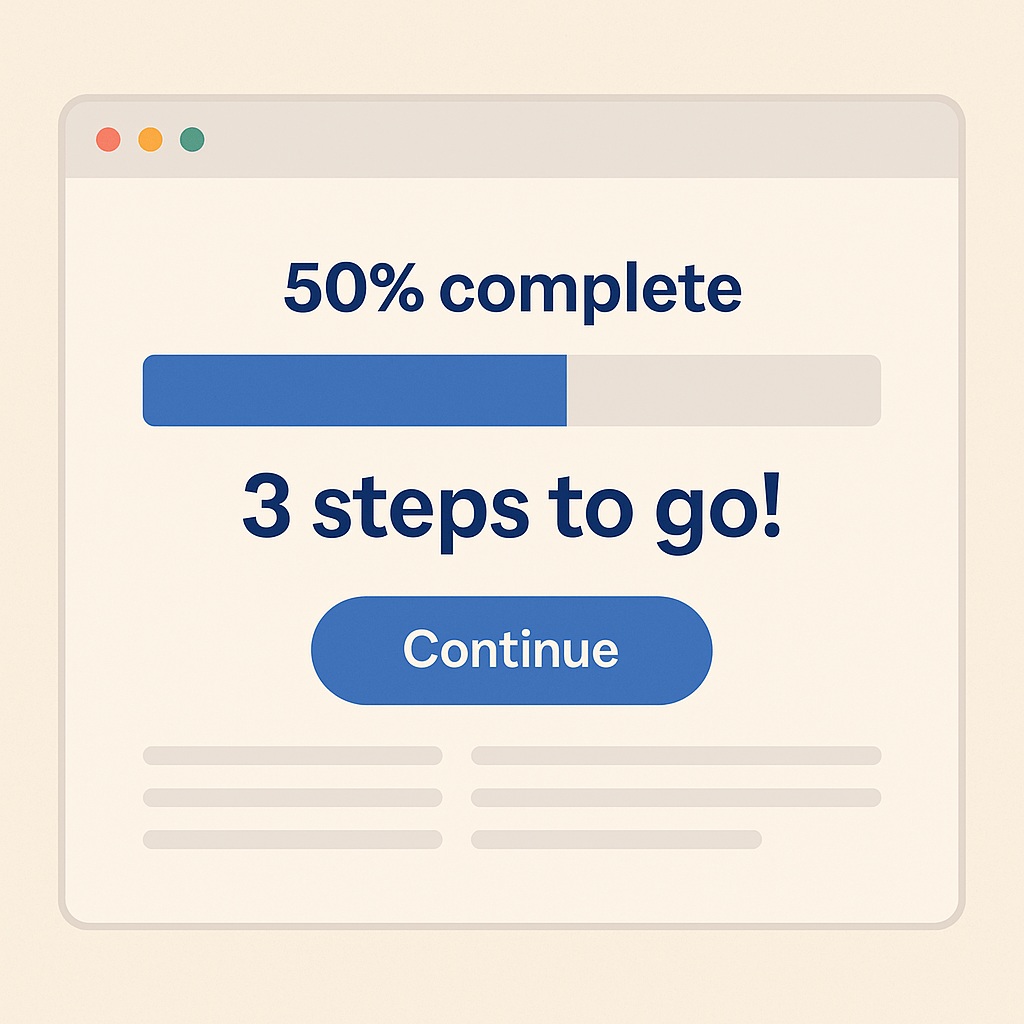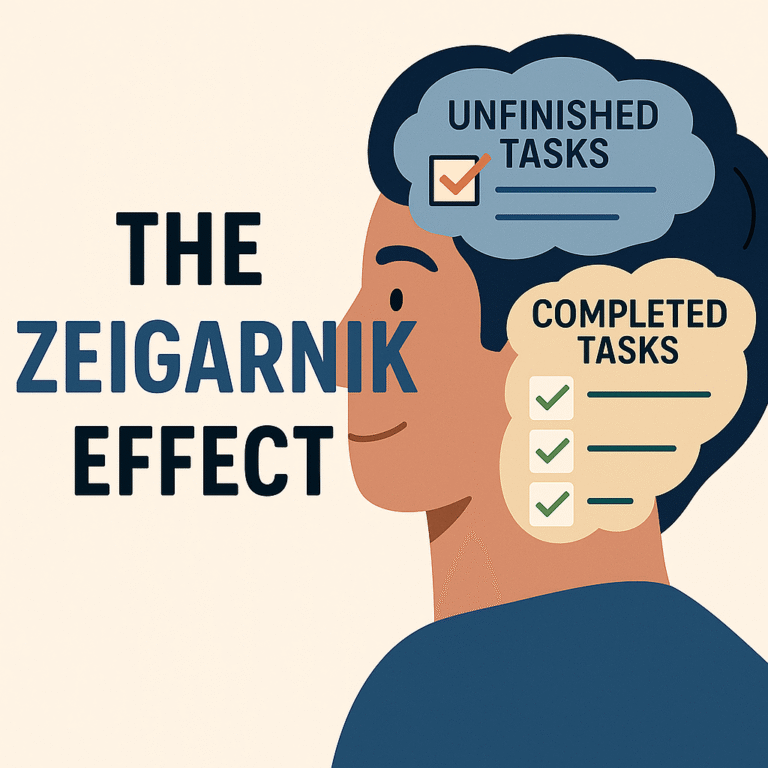Why do unfinished tasks linger in our minds longer than those we’ve completed? This is a classic example of the Zeigarnik Effect, a psychological phenomenon that makes incomplete actions difficult to shake off. This cognitive tension impacts not only our productivity and memory but also provides marketers with a clever way to enhance engagement and encourage conversions. In this article, we’ll explore how to harness and even combat the Zeigarnik Effect in real-world contexts such as storytelling, UX design, and time management.
Key Takeaway:
- Curiosity Converts: Incomplete narratives spark action. By leaving marketing messages open-ended—like using cliffhangers or teaser campaigns—you tap into consumers’ psychological need for closure, increasing click-throughs, repeat visits, and conversions.
- Progress Prompts Completion: UX design fuels follow-through. Progress bars, checklists, and interactive steps trigger users’ urge to finish what they’ve started, making them powerful tools to boost engagement and task completion rates across apps and websites.
- Mental Tension is a Tool; Use it or Defuse it. The Zeigarnik Effect can be leveraged to drive marketing performance or managed to enhance personal productivity. Techniques like “intentional pauses” and externalising to-do lists help turn tension into traction.
What is the Zeigarnik Effect?

The Zeigarnik Effect explains why we tend to remember unfinished or interrupted tasks far better than those we’ve completed. This cognitive phenomenon sheds light on why incomplete actions can stay in our minds, even when we’re trying to concentrate on something else.
First identified in the 1920s by the Soviet psychologist Bluma Zeigarnik, this effect was inspired by her mentor, Kurt Lewin. He noticed that waiters had no trouble recalling unpaid orders but would forget them once they had been settled. To delve deeper into this idea, Zeigarnik carried out her experiments, which confirmed that interrupted tasks leave a more lasting mental impression, making them easier to remember than those we’ve finished.
Why Zeigarnik Effect Happened
The Zeigarnik Effect is all about cognitive tension, that uneasy feeling we get when we leave tasks unfinished. Our brains naturally crave closure, and when we don’t get it, those unresolved tasks linger in our minds like pesky reminders. It’s like having a mental playlist stuck on repeat, pushing us to revisit what’s left undone to ease that nagging tension.
The mind seldom forgets unresolved matters, keeping them in a mental waiting room until they are addressed.
This effect sheds light on why an unfinished email might stick in your mind, why a cliffhanger in a TV show keeps you coming back for more, and why an incomplete to-do list can really stress you out. Many marketers, educators, and UX designers cleverly use this phenomenon to boost user engagement, improve recall, and lift completion rates.
Real-World Examples of the Zeigarnik Effect
The Zeigarnik Effect isn’t just a quirky concept hidden in psychology textbooks; it’s something we encounter almost every day, often without even noticing! From cliffhangers on Netflix to nagging unfinished to-do lists that pop into our minds at 3 AM, this fascinating mental phenomenon has truly significant (and incredibly powerful) applications. Let’s dive into three areas where it appears unexpectedly and meaningfully!
Marketing: Cliffhangers That Convert

The Zeigarnik Effect captivates consumers by keeping stories or messages unfinished. Marketers tap into this by crafting open-ended headlines like “You won’t believe what happened…”, using teaser videos, or employing calls to action that create a sense of anticipation. Techniques such as countdowns, limited-time offers, and low-stock alerts all play on that feeling of incompletion to encourage people to take action.
UX Design: Why Progress Bars Work

Progress indicators create a sense of visual urgency that encourages users to finish their tasks. Whether it’s a “You’re 50% there” bar during onboarding or an unfinished checklist, these UX patterns leverage psychological tension to boost task completion rates. They’re particularly effective in app tutorials and when setting up accounts.
Learning & Memory: Make It Stick with Incomplete Sessions

Taking a break while studying or working can boost your memory. It turns out that our brains tend to remember incomplete tasks. It’s clearer. Techniques like spaced study sessions or Pomodoro breaks make the most of this insight, enhancing both our ability to retain information and our motivation over time.
From marketing to UX and education, the Zeigarnik Effect helps shape behaviour by making incompleteness feel uncomfortable. Once you understand this bias, you can use it to increase conversions, improve learning outcomes, and design more engaging user experiences.
How to Overcome the Zeigarnik Effect
| How to Overcome the Zeigarnik Effect? | ||
|---|---|---|
| Strategy | Action Step | Psychological Benefit |
| Start Small: Commit to 5 Minutes | Work on a task for just 5 minutes to activate momentum | Reduces procrastination and kickstarts progress |
| Break It Down | Divide big tasks into smaller, manageable actions | Prevents overwhelm and lowers cognitive load |
| Write It Down (Externalise) | Use sticky notes, notebooks, or task apps to capture unfinished thoughts | Clears mental space and reduces intrusive reminders |
| Use the “Intentional Pause” Technique | Stop mid-task or mid-sentence to create natural curiosity | Encourages smoother re-entry and maintains engagement |
| Build a Second Brain | Offload notes and partial work into tools like Notion or Obsidian | Frees mental RAM and supports creative clarity |
| Simplify, Don’t Multitask | Focus on one goal or task at a time; avoid context-switching | Enhances completion rates and lowers stress from open loops |
The Zeigarnik Effect can feel like a double-edged sword; on one hand, it keeps unfinished tasks fresh in your mind, but on the other, it can create mental clutter, anxiety, and diminish your focus. But here’s the silver lining: with some practical strategies, you can soothe that mental noise and reclaim your cognitive space!
Here are some enjoyable, science-backed techniques that are brain-friendly to help you manage the Zeigarnik Effect:
Start Small: Commit to 5 Minutes
Feeling a bit stuck? Instead of focusing on finishing, why not just aim to get started? Make a little promise to yourself to work on a task for just five minutes. You might find that once you begin, your mind won’t want to leave the task unfinished. This nifty technique works wonders, especially when you’re engaging in activities that often lead you to lose track of time, like writing, cleaning, or diving into creative projects!
Break It Down to Beat It Down
Large projects can sometimes feel overwhelming since they activate a lot of mental tabs all at once. To make things easier, try breaking them down into bite-sized actions! Instead of thinking about a huge task like “launch website,” consider focusing on smaller steps like “write homepage intro” or “choose a font.” The smaller the step, the less stress it creates for your mind—but just starting with even one small action fulfils your brain’s need for progress!
Externalise the Unfinished: Write It Down
Before you wrap up your workday or switch gears, take a moment to jot down any unfinished tasks. Use sticky notes, a notebook, or your favourite task manager- whatever feels right for you! Putting your tasks on paper helps your brain relax, saying, “I’ve captured this—I can come back to it later.” You’ll notice you feel more focused and less scattered right away.
💡 Bonus Tip: Try to keep your list visible but short. A lengthy to-do list can quickly become another form of stress!
Use the “Intentional Pause” Technique
Rather than finishing a task, try pausing partway intentionally, whether in a sentence, a slide, or a design element. This technique, known as an “open loop,” sparks natural curiosity and gives you a boost of momentum when you come back to it. Think of it as bookmarking a thought with a ribbon of excitement!
Build a Second Brain (So Yours Can Rest)
Your mind isn’t just a storage unit—it’s a powerful processor! Find some trusted system, whether a digital app or a trusty notebook, to offload information, ideas, and those little lingering thoughts. Tools like Notion or Obsidian can serve as your “second brain,” helping you free up mental RAM for even more creativity and clarity.
📌 For example, why not save partial drafts, brainstorms, or great ideas into organised folders? This way, your brain won’t feel pressured to hold onto everything in the background!
Simplify, Don’t Multitask
When tasks become complex, it’s easy to feel like they’re never fully completed. Take a moment to ask yourself, “What is my real goal here?” Break things down to their core and tackle them one at a time. Remember, multitasking often leads to more unfinished tasks than your mind can comfortably manage, leading to feeling overwhelmed.
How to Use the Zeigarnik Effect in Marketing
Understanding the Zeigarnik Effect provides marketers with a unique opportunity: by intentionally leaving “mental open loops,” you can encourage users to stay curious, click through, and return for more. Here’s how to implement it across your campaigns:
Use Cliffhangers in Marketing Content
Storytelling is compelling, and unfinished storytelling is simply unforgettable! Consider using cliffhangers in your brand content: end your videos with unresolved situations or craft email campaigns that hint at exciting benefits, revealing them entirely in your following message. This approach taps into your audience’s natural desire for closure, encouraging them to engage with you.
📌 Here’s an example: Launch a video ad series in which each episode concludes with a question like “What happens next?” This little hook can motivate users to return for the next instalment!
Use Interactive UX to Boost Engagement
Gamified quizzes, interactive checklists, and progress-based learning journeys are effective because they keep users engaged in a task and spark their natural desire to finish it.
Even a simple multi-step survey, like “You’re on Step 2 of 3,” taps into the Zeigarnik Effect. That little feeling of unfinished business encourages users to come back and complete the experience.
📌 Bonus Tip: Consider using micro-conversions to break larger calls to action into smaller, manageable steps. Just starting the journey can significantly increase the chances of people completing it.
Create Teaser Campaigns That Spark Curiosity
Instead of sharing all the features at once, it’s fun to create excitement for upcoming launches by adding a bit of mystery and leaving some information to the imagination. Whether it’s a countdown on your landing page or a sneak peek email that reveals “only 50%” of the new product, you’ll spark anticipation and encourage lively discussions.
📌 Example: Apple’s pre-launch campaigns beautifully unveil just enough to generate buzz, while skillfully keeping some key details under wraps—this strategy maximises curiosity and boosts pre-orders!
Retargeting with Zeigarnik Effect Techniques
Utilise the Zeigarnik Effect to enhance your retargeting strategy! Remind users who added items to their cart but haven’t completed their purchase by showing them personalised ads. Messages like “Still thinking it over?” or “You’re almost there!” can gently encourage them to finalise their decision.
📌 Example: Airbnb effectively employs this tactic by displaying reminders for unfinished bookings and captivating images of destinations users have browsed. This approach sparks curiosity and rekindles their interest!
| How to Use the Zeigarnik Effect in Marketing | ||
|---|---|---|
| Marketing Strategy | How It Applies the Zeigarnik Effect | Practical Example |
| Use Cliffhangers in Content | Unfinished stories or open-ended messages create psychological tension that keeps audiences engaged. | Create a video ad series that ends each episode with a teaser question like “What happens next?” to encourage repeat views. |
| Boost Engagement with Interactive UX | Multi-step processes and progress indicators trigger users’ desire to complete tasks. | Use quizzes, onboarding checklists, or messages like “Step 2 of 3” to encourage completion and retention. |
| Create Curiosity with Teaser Campaigns | Withholding full product details builds suspense and anticipation. | Use countdown timers or partial reveals (e.g., “50% of features coming soon”) to fuel interest before a launch. |
| Use Retargeting to Nudge Completion | Reminders of unfinished tasks reactivate user interest and reduce drop-offs. | Show abandoned cart ads with messages like “Still thinking it over?” or display previously viewed items, like Airbnb does. |
Want to learn how other psychological effects impact consumer behaviour? Check out our guides on the Mere Exposure Effect and Decoy Effect.
Conclusion
The Zeigarnik Effect reveals something fascinating: unfinished tasks have a unique way of capturing our attention. By embracing this principle in marketing, productivity, and consumer behaviour, you can enhance engagement and inspire meaningful actions. So, whether creating captivating content or organising your daily goals, tapping into the potential of cognitive tension can turn that curiosity into real conversions!
FAQ
The Zeigarnik Effect is a psychological phenomenon where people remember unfinished or interrupted tasks better than completed ones. This occurs because incomplete tasks create a sense of mental tension that keeps them active in our memory until they are resolved.
Marketers can leverage the Zeigarnik Effect by creating a sense of curiosity and incompletion in their campaigns. Strategies include using cliffhangers in content, progress bars in user flows, teaser-style product launches, and retargeting ads that remind users of unfinished actions, like abandoned carts or incomplete signups.
To reduce the mental burden of unfinished tasks, break large projects into small steps, write down incomplete tasks, and commit to working on something for just five minutes. Building a “second brain” to store tasks externally and simplifying your workflow can also help minimise cognitive tension and improve focus.

